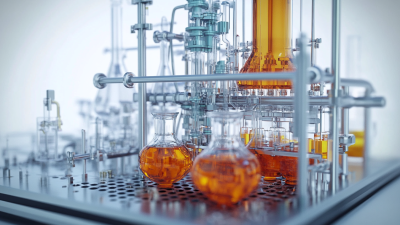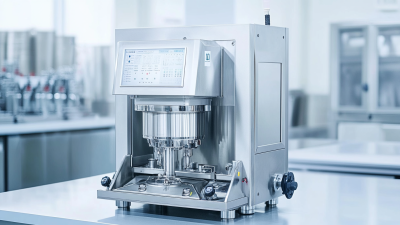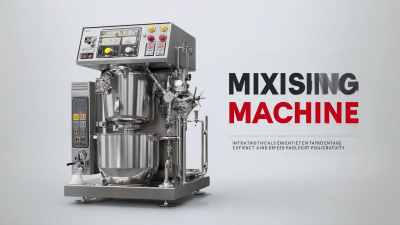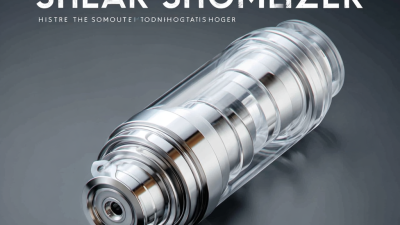
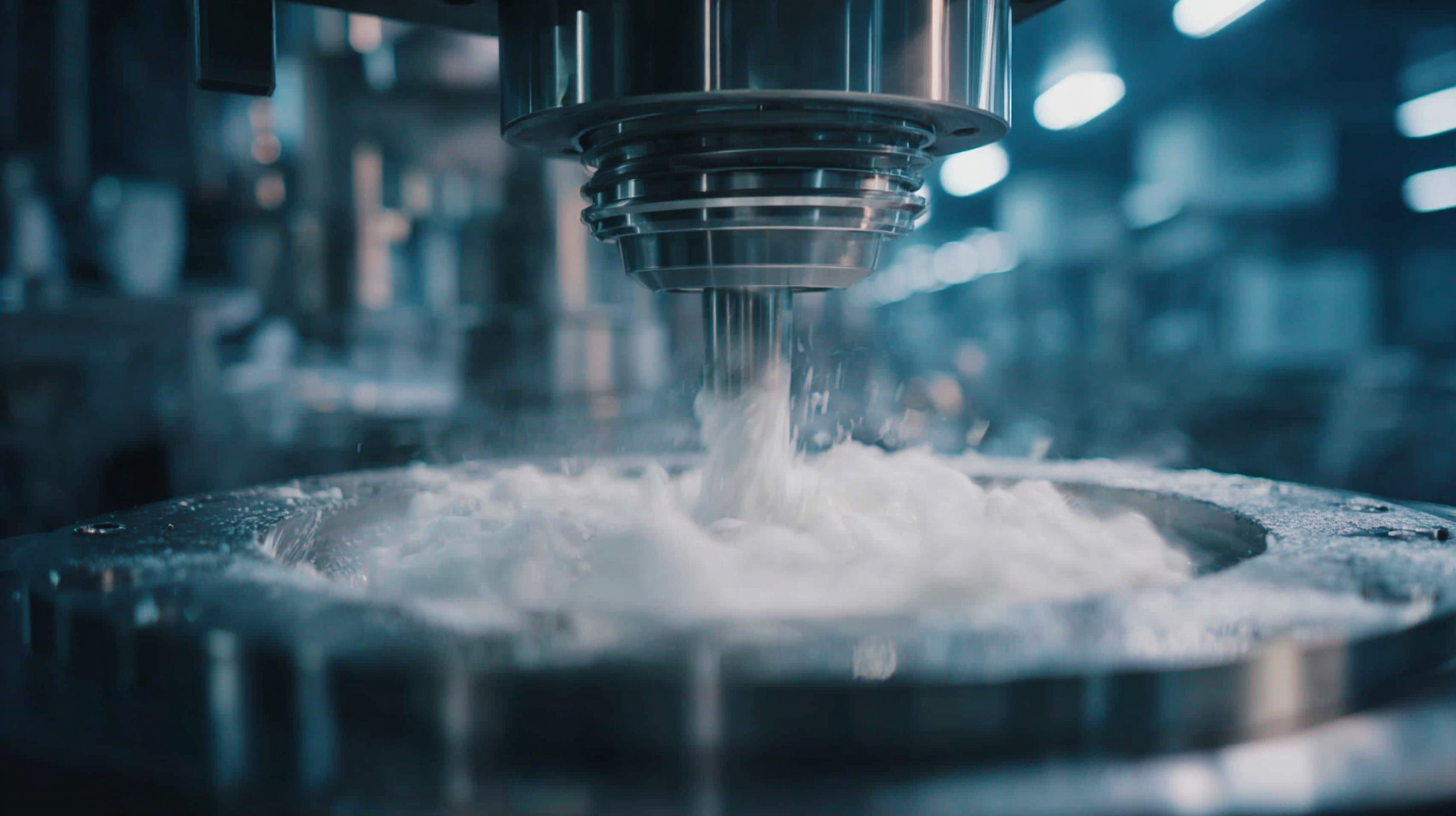 In the competitive landscape of modern manufacturing, optimizing production processes is crucial for improving both efficiency and quality. A pivotal tool in achieving these goals is the High Speed Mixer, which has been shown to enhance mixing precision and reduce processing times significantly. According to recent industry reports, companies utilizing high speed mixers can achieve up to a 30% increase in production efficiency compared to traditional mixing methods. Furthermore, the ability of these mixers to handle a wide range of materials enables manufacturers to innovate product formulations while maintaining consistency and reducing waste. As industries continue to push for faster and more sustainable production practices, understanding how to effectively integrate a high speed mixer into your production line becomes paramount. This article explores key strategies and best practices to maximize the benefits of high speed mixers, ensuring that your operations not only meet but exceed industry standards.
In the competitive landscape of modern manufacturing, optimizing production processes is crucial for improving both efficiency and quality. A pivotal tool in achieving these goals is the High Speed Mixer, which has been shown to enhance mixing precision and reduce processing times significantly. According to recent industry reports, companies utilizing high speed mixers can achieve up to a 30% increase in production efficiency compared to traditional mixing methods. Furthermore, the ability of these mixers to handle a wide range of materials enables manufacturers to innovate product formulations while maintaining consistency and reducing waste. As industries continue to push for faster and more sustainable production practices, understanding how to effectively integrate a high speed mixer into your production line becomes paramount. This article explores key strategies and best practices to maximize the benefits of high speed mixers, ensuring that your operations not only meet but exceed industry standards.
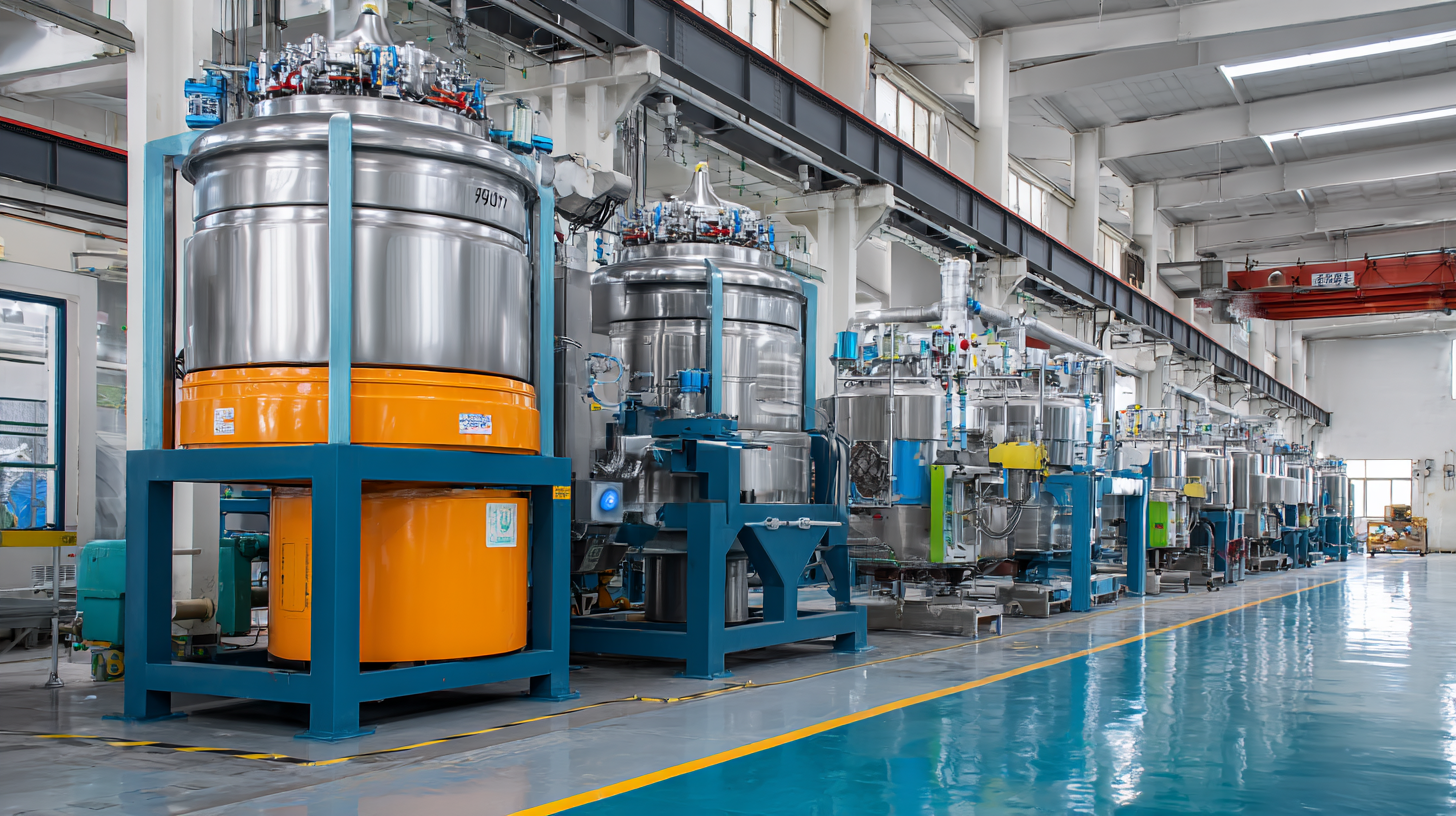 High speed mixers play a crucial role in enhancing production efficiency across various industries. These machines are designed to blend ingredients quickly and uniformly, significantly reducing the time needed for processing. According to a report by Smithers Pira, high-speed mixing technology can increase production rates by up to 50% compared to traditional mixing methods. This efficiency is vital in sectors such as food processing, pharmaceuticals, and chemical manufacturing, where speed and consistency are paramount.
High speed mixers play a crucial role in enhancing production efficiency across various industries. These machines are designed to blend ingredients quickly and uniformly, significantly reducing the time needed for processing. According to a report by Smithers Pira, high-speed mixing technology can increase production rates by up to 50% compared to traditional mixing methods. This efficiency is vital in sectors such as food processing, pharmaceuticals, and chemical manufacturing, where speed and consistency are paramount.
To maximize the benefits of high-speed mixers, companies can adopt several key strategies. First, ensuring regular maintenance of the mixers can prevent breakdowns and maintain optimal performance. A well-maintained mixer operates at peak efficiency, reducing downtime and the risk of product inconsistency. Second, proper training for operators on mixer settings and material properties can further enhance mixing quality and efficiency. Utilizing the ideal speed and blending time for specific formulations can dramatically boost production yield.
Tip: Monitor the viscosity of your materials closely. Selecting the right mixer based on the viscosity can exponentially improve mixing performance and efficiency. Additionally, integrating real-time monitoring technology can help identify performance issues early, ensuring continuous optimization of your production line.
When integrating a high-speed mixer into your production line, understanding the key technical specifications is critical for achieving optimal performance. One of the primary specifications to consider is the mixer’s horsepower. According to a report by the International Mixer Association, mixers with a horsepower rating of 3 HP or higher significantly enhance the blending efficiency, reducing processing time by up to 30%. This increase in power allows for quicker mixing cycles, ultimately leading to higher throughput in production.
Another crucial factor is the shaft speed, measured in revolutions per minute (RPM). High-speed mixers typically operate in the range of 1,000 to 8,000 RPM, enabling them to handle a variety of materials, from liquids to powders. Research highlights that mixers operating at optimal speeds can improve particle dispersion and uniformity, which is vital for maintaining product consistency. Furthermore, considering the mixer’s design and material is essential; stainless steel mixers, for instance, resist corrosion and contribute to a longer lifespan, as noted in the Food Processing Equipment Manufacturers Association report, leading to less downtime and maintenance costs.
| Specification | Description | Optimal Range | Impact on Efficiency |
|---|---|---|---|
| Mixing Speed | RPM of the mixer | 1000 - 5000 RPM | Higher speeds reduce mixing time significantly |
| Motor Power | Power output of the mixer motor | 5 - 20 HP | Adequate power ensures consistent performance under load |
| Tank Capacity | Volume of the mixing chamber | 50 - 500 liters | Larger capacities allow for bulk processing |
| Blade Design | Shape and style of mixing blades | Customizable | Optimized blade designs improve mix consistency |
| Temperature Control | Method of controlling mix temperature | Chilled or heated - dependent on process | Maintaining temperature can prevent degradation |
Maximizing efficiency in your production line with a high-speed mixer relies heavily on understanding and optimizing particle size distribution (PSD) and mixing times. Recent research indicates that for mechanical feed mixers, the optimal mixing times range between 1.5 to 10 minutes, with speeds of 40 to 80 rpm. These parameters play a critical role in achieving uniform mixing, which is essential for consistent product quality. Additionally, analyzing the rheological properties of your materials can further enhance the mixing process, ensuring that the desired consistency and blend are achieved.
**Tips**: When adjusting your mixing process, consider conducting a thorough PSD analysis during the wet-granulation process. This will help you understand the phenomena involved and allow for better control over the final particle characteristics. Implementing a multivariate approach to adjust your mixing techniques can also be advantageous, as demonstrated in studies focusing on bioactive glass, suggesting that fine-tuning various parameters can lead to significant improvements in production outcomes.
Furthermore, it is beneficial to pay close attention to the material characteristics you are working with. For instance, understanding how particle shape and size influence the sieving accuracy can directly impact your process efficiency—hence optimizing your formulas based on these insights will foster a more productive manufacturing environment.
In today’s fast-paced manufacturing landscape, integrating automation with high-speed mixers has emerged as a
game-changing strategy for
enhancing production efficiency. According to a recent industry report by Grand View Research, the global mixing
equipment market is expected to reach USD 17.5 billion by
2025, driven in part by the increasing demand for automated processes. By incorporating smart technologies into
mixing operations, businesses can optimize their workflows, reduce downtime, and ensure
consistent product quality.
Utilizing devices equipped with IoT (Internet of Things)
sensors allows manufacturers to monitor real-time data during mixing processes. This gives operators insights into
viscosity levels and
temperature conditions, enabling precise adjustments on the fly.
A study by McKinsey highlights that implementing automation can yield efficiency improvements of up to
30%, significantly impacting production throughput.
Tips: Ensure that your high-speed mixer is connected to your manufacturing execution system (MES).
This integration will automate data collection and provide comprehensive insights into mixer performance. Additionally,
consider using predictive maintenance algorithms to anticipate
equipment failures, which can prevent costly production interruptions.
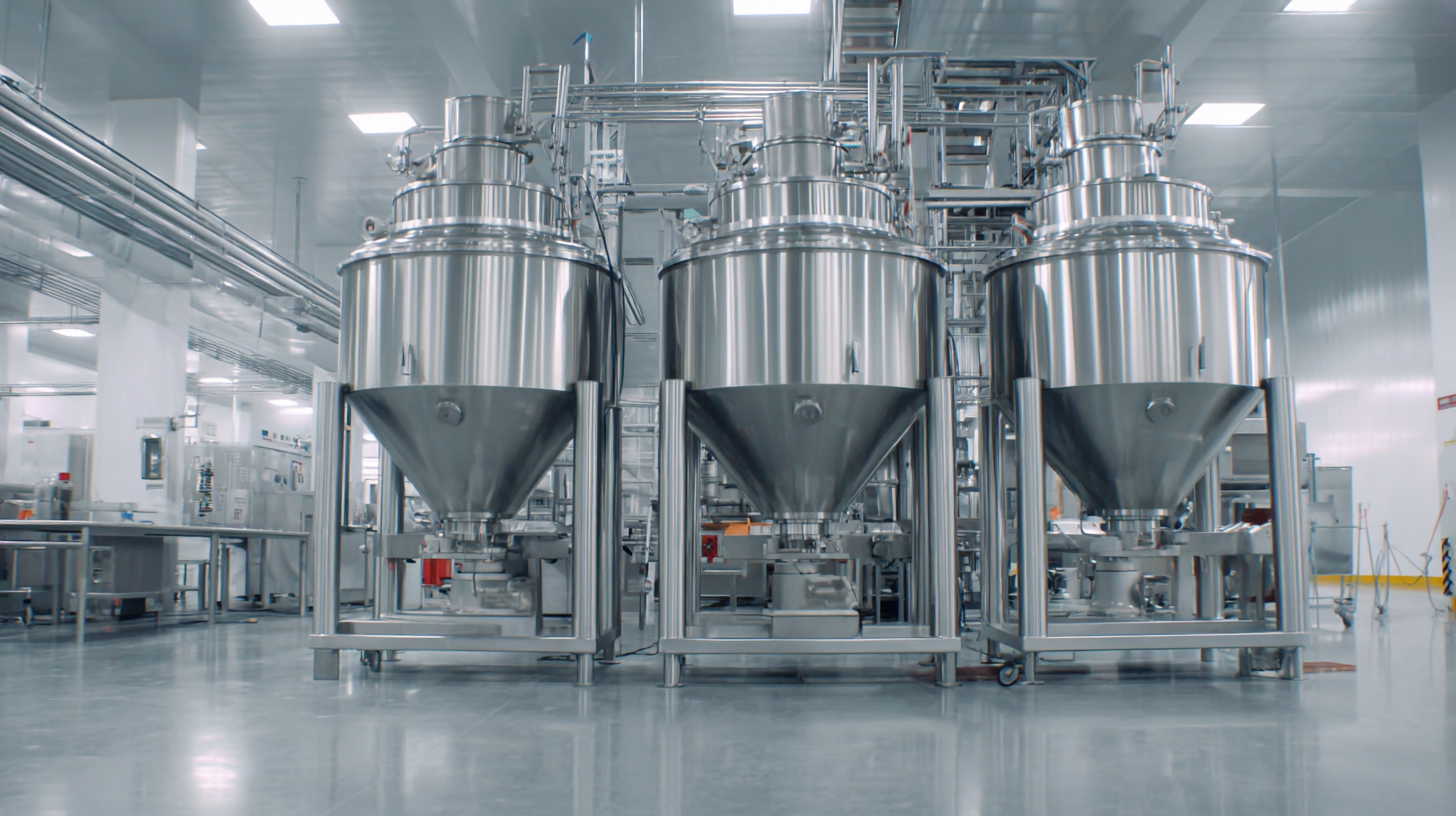 High-speed mixers have become essential in modern production lines, significantly transforming efficiency across various industries. In the food sector, a leading manufacturer implemented a high-speed mixer to streamline the blending of ingredients for sauces. Previously, the process involved multiple mixing stages that were both time-consuming and labor-intensive. After integrating the high-speed mixer, the company reduced mixing time by 50%, allowing them to produce higher volumes with less manpower. This change not only improved productivity but also enhanced the consistency and quality of the final product.
High-speed mixers have become essential in modern production lines, significantly transforming efficiency across various industries. In the food sector, a leading manufacturer implemented a high-speed mixer to streamline the blending of ingredients for sauces. Previously, the process involved multiple mixing stages that were both time-consuming and labor-intensive. After integrating the high-speed mixer, the company reduced mixing time by 50%, allowing them to produce higher volumes with less manpower. This change not only improved productivity but also enhanced the consistency and quality of the final product.
In the pharmaceutical industry, another success story emerges. A company specializing in the production of powdered medications faced challenges with uneven mixtures that affected dosage accuracy. By introducing a high-speed mixer, they achieved a homogeneous blend in a shorter time frame. This improvement minimized waste and reduced the need for reprocessing, ultimately leading to cost savings and better compliance with stringent regulatory standards. These real-world examples underscore the pivotal role of high-speed mixers in boosting production efficiency, showcasing their capability to address specific industry challenges while yielding substantial operational benefits.
